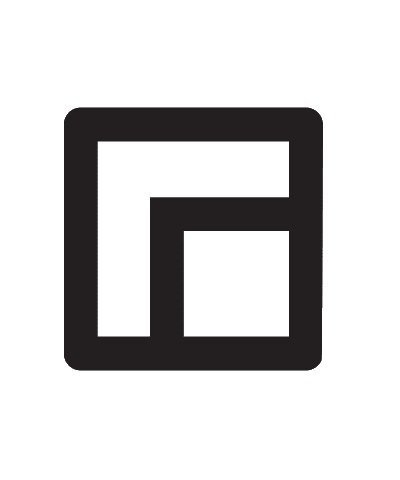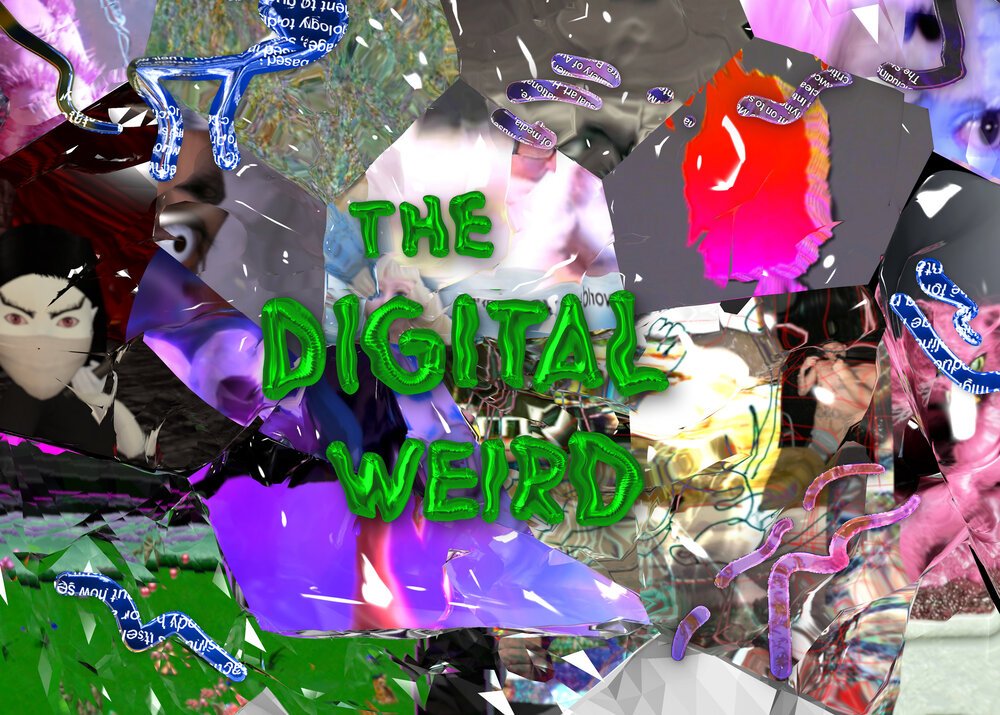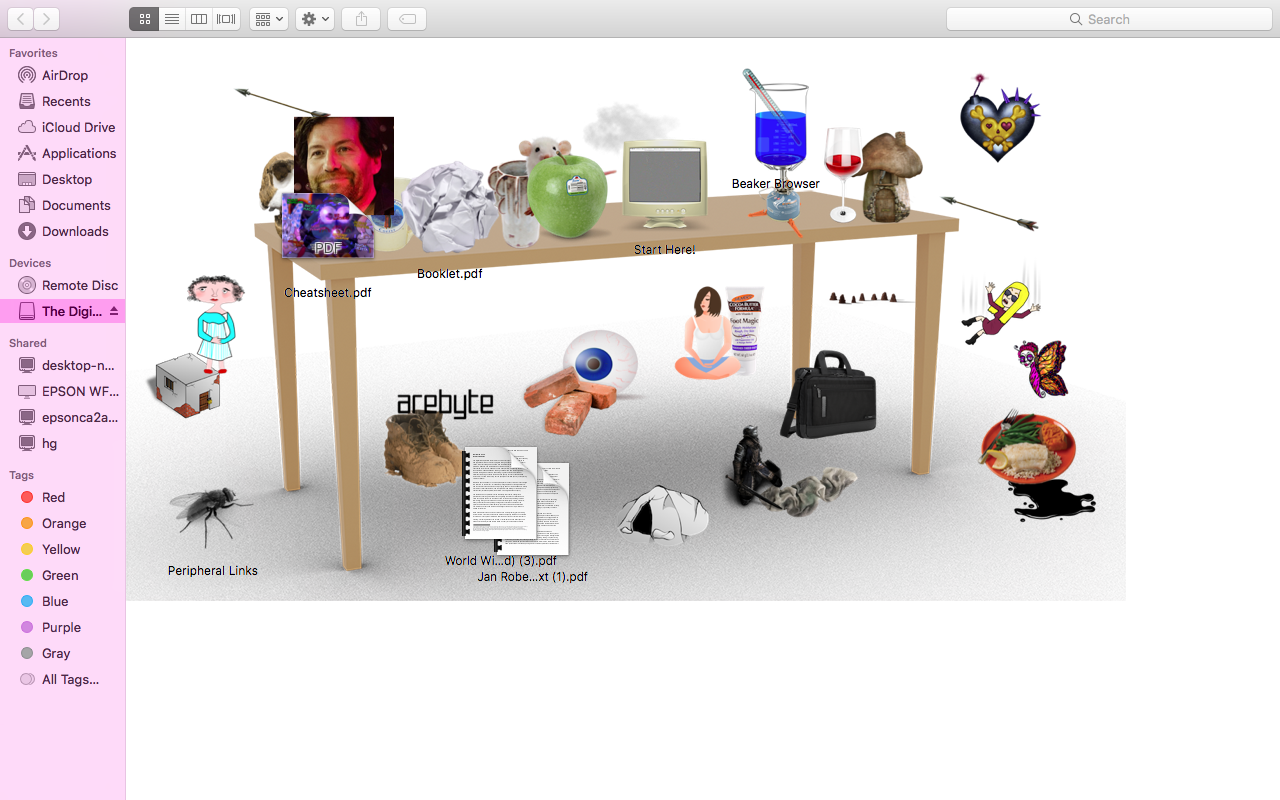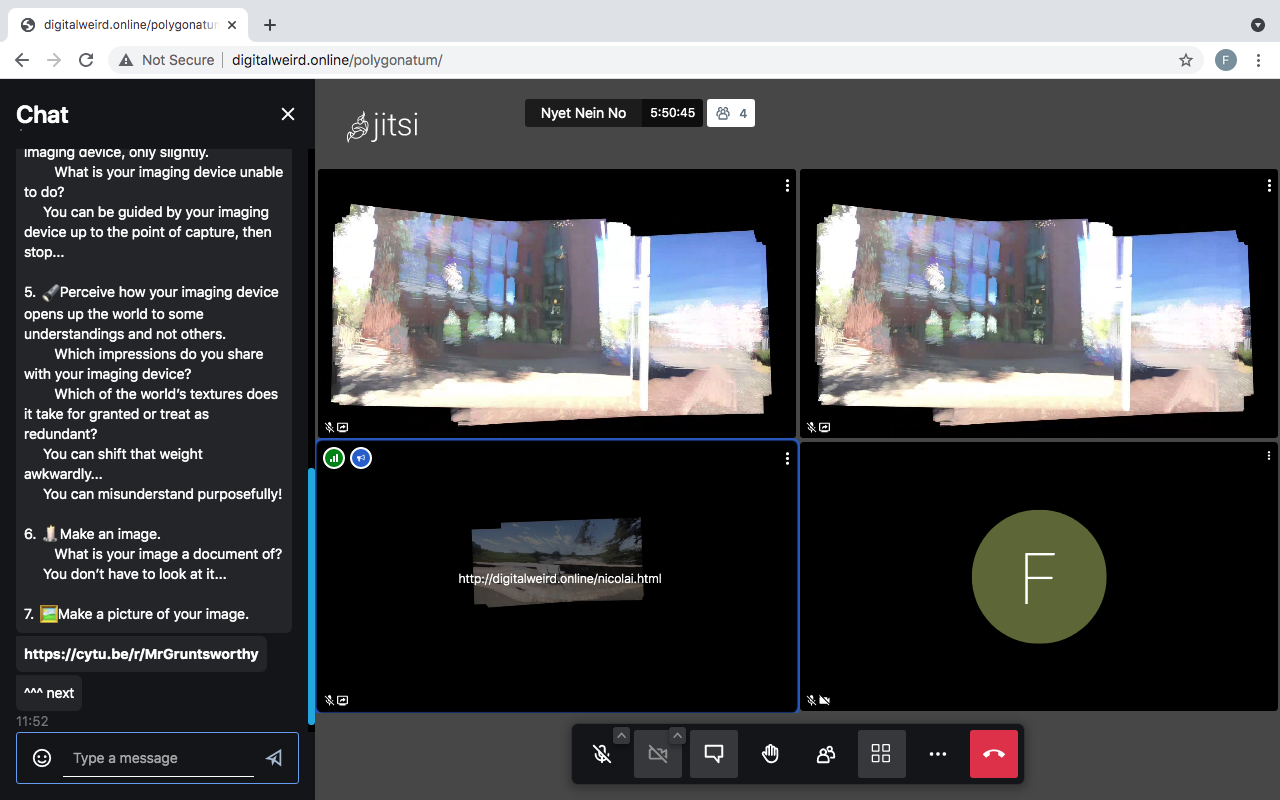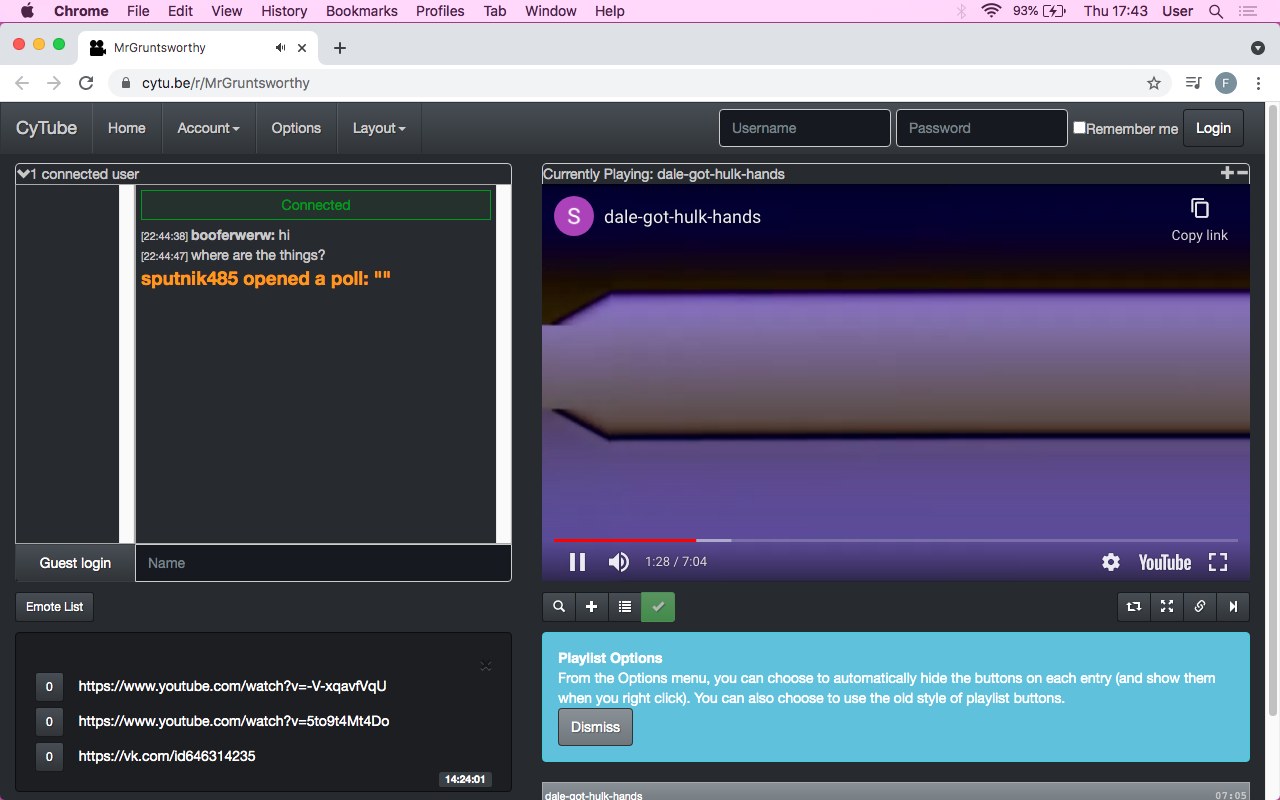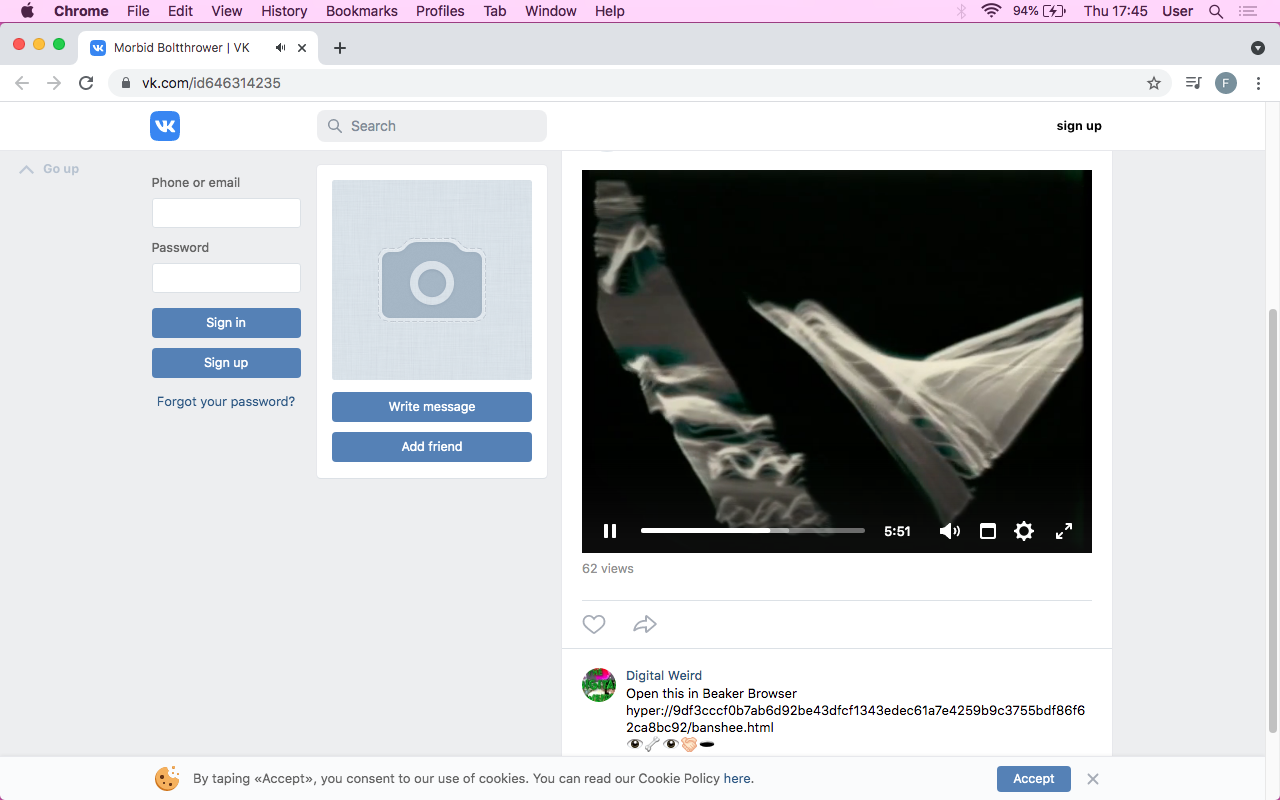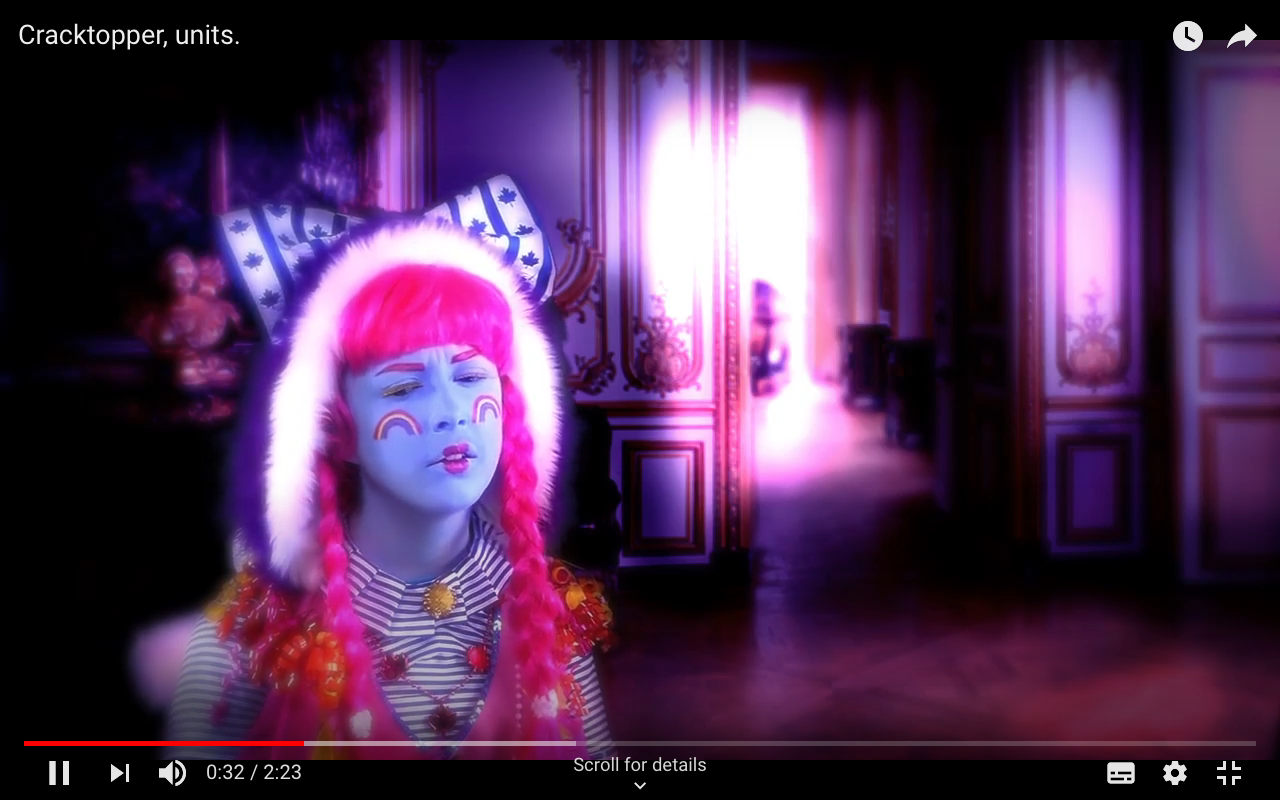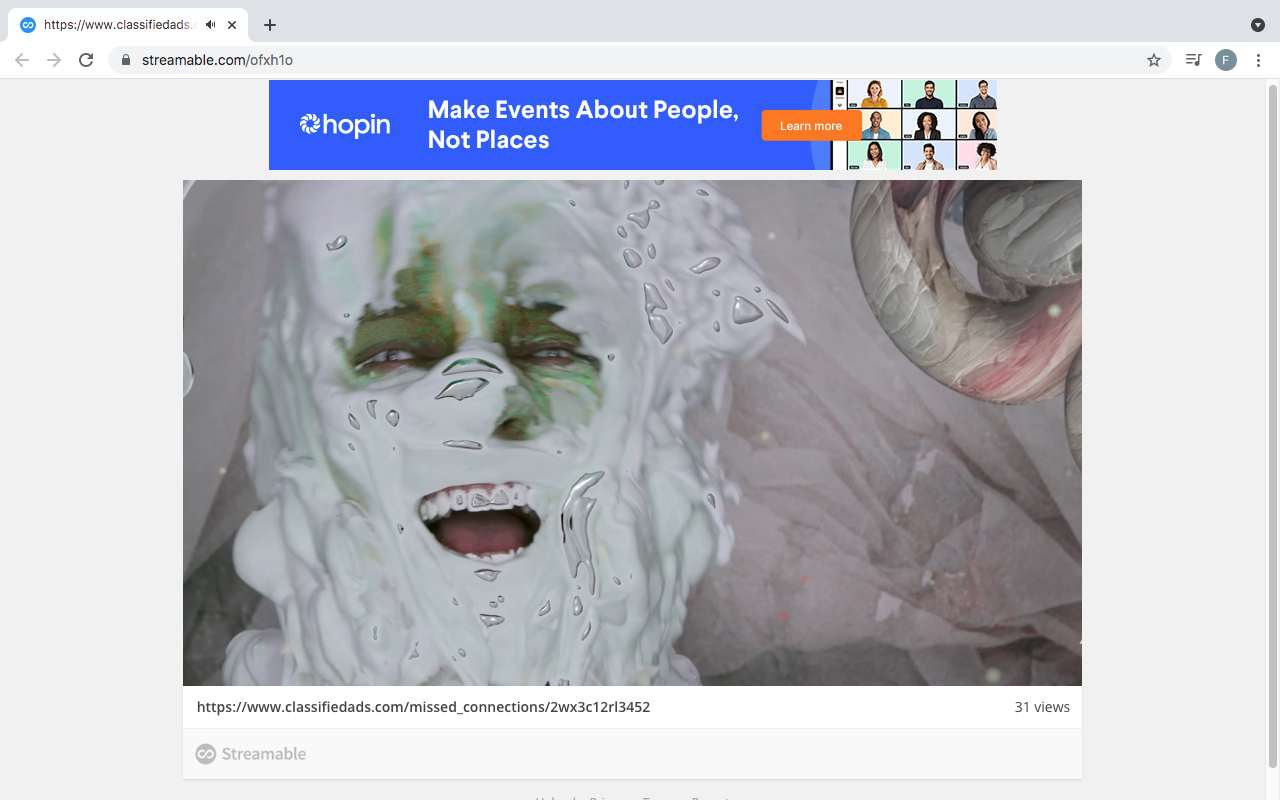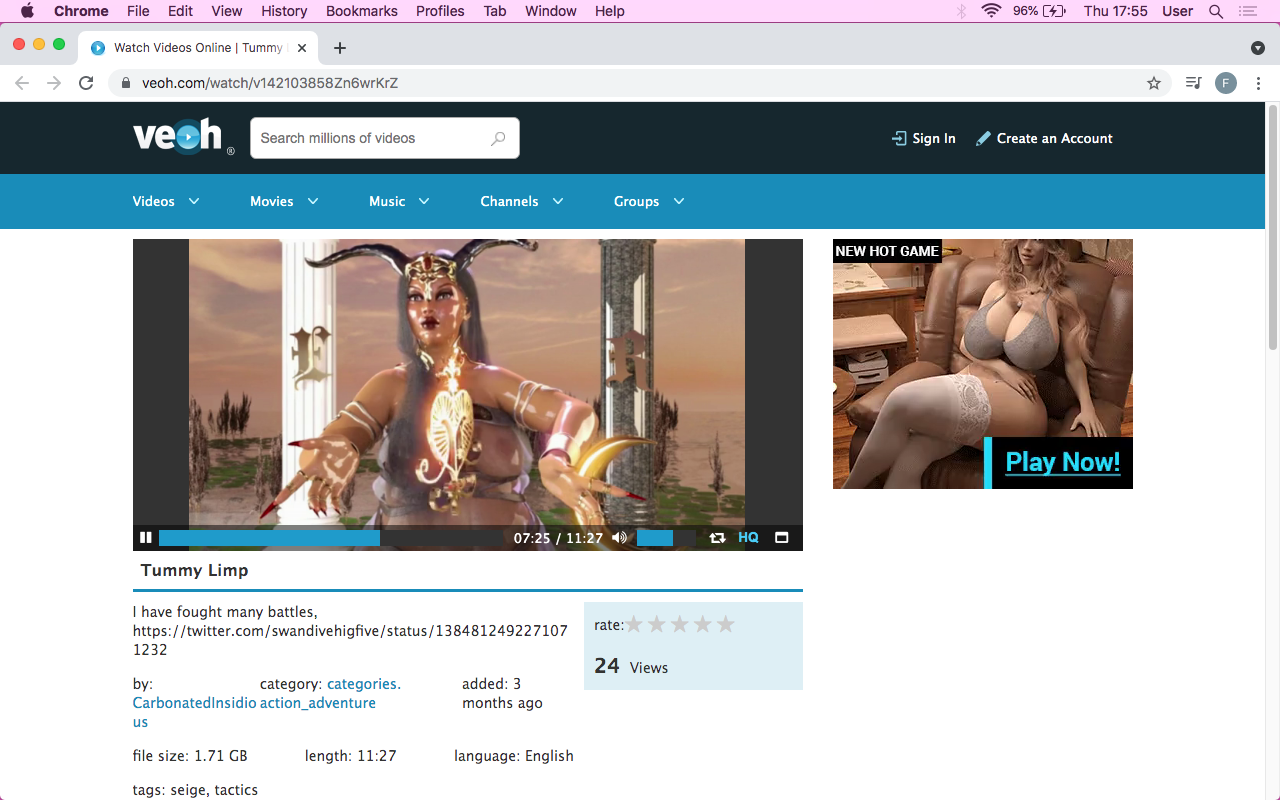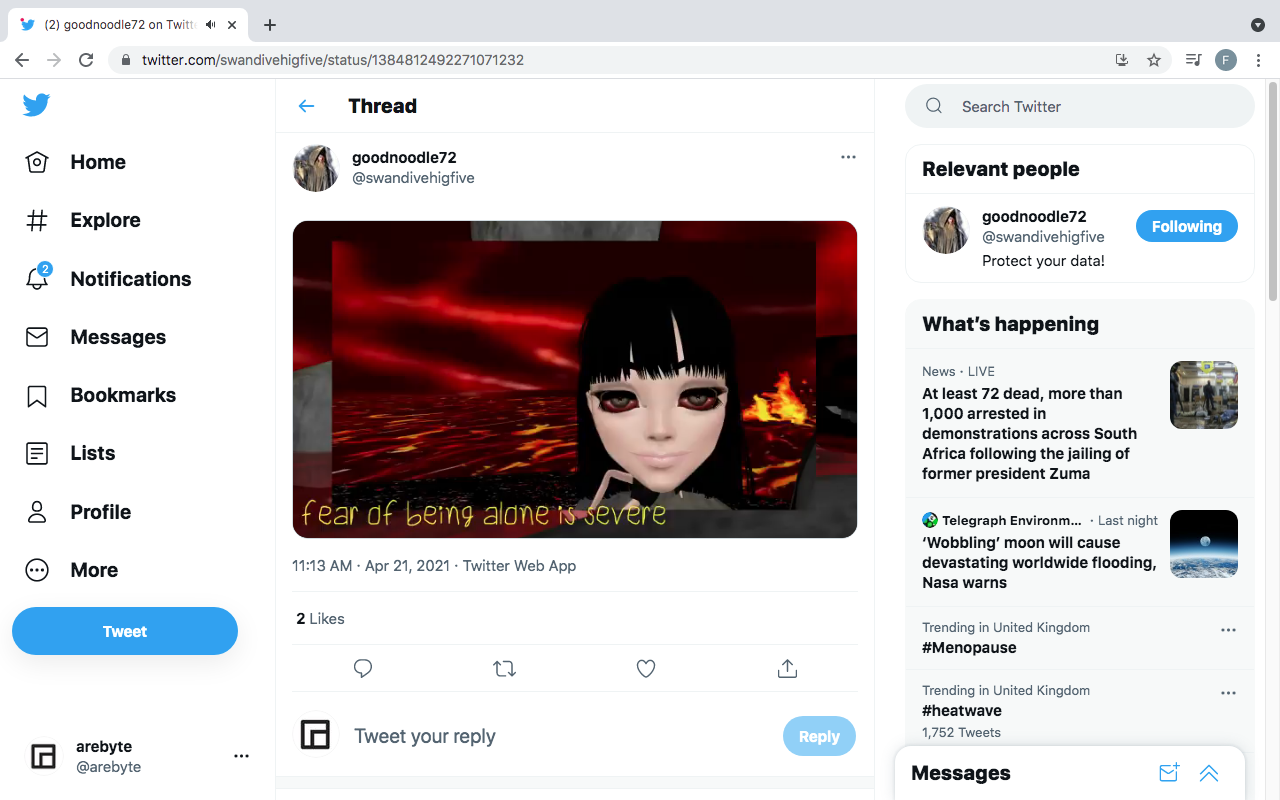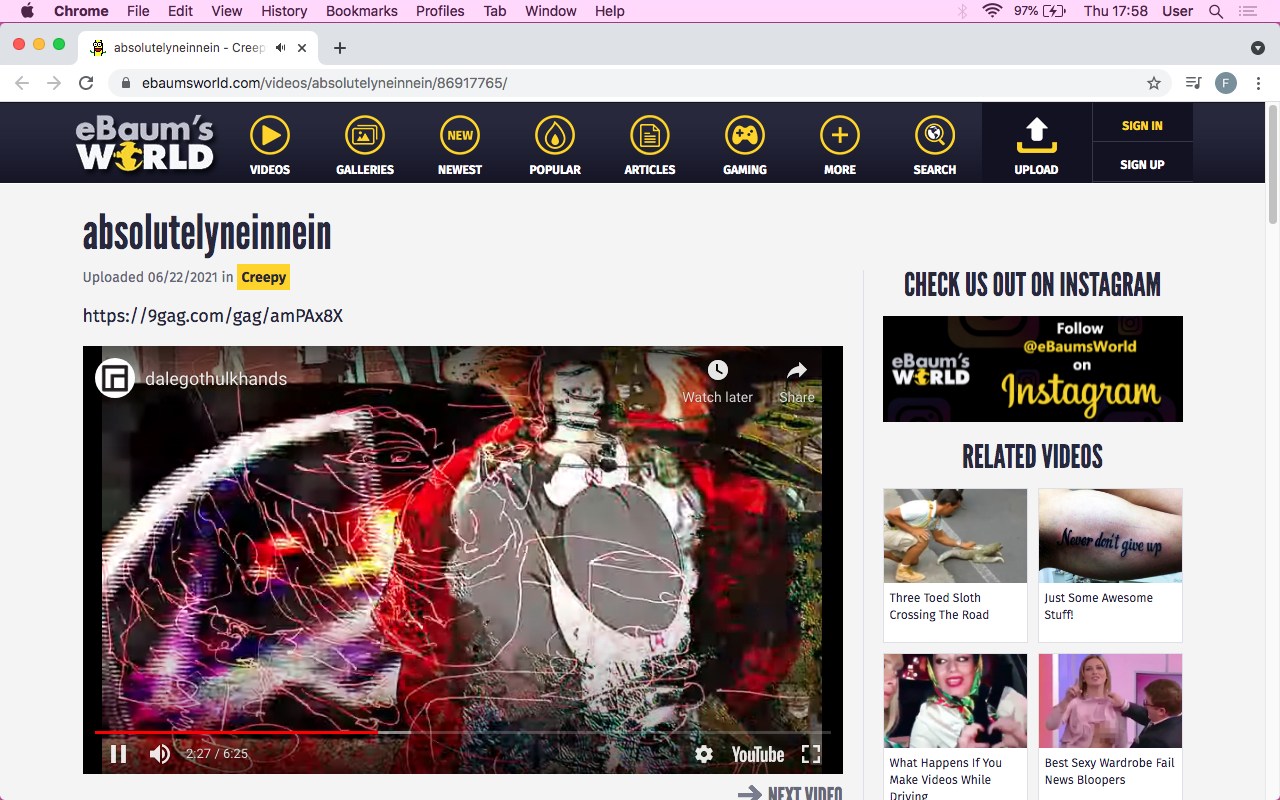The Digital Weird
co-curated with Jan Robert Leegte
Featuring works by Digital Excreta, Adham Faramawy, Casey Kauffmann, Wednesday Kim, Geoffrey Lillemon, Rachel Maclean, Cassie McQuater, Jacques Perconte, Sabrina Ratté, Nicolai Schmelling, The Vasulkas and Kid Xanthrax
Exhibition runs Mon 5th July - Mon 6th September 2021
Part of the 2021 programme Realities
The Digital Weird parodies the format of an online scavenger hunt. Visitors are asked to find hyperlinks within each work to progress through a sequence of carefully placed videos, stills, texts and games. These works are disseminated across a number of platforms, websites, and other methods of communication; supplanted into subcultured social scenes, added into niche video platforms, appearing as links into the esotericism of Reddit debates, and bogus landmarks within the Google map matrix. Nothing is what it seems, and nothing is given context of artist name or exhibition title. Using nonsense usernames and phoney accounts, the embedded works exist in a chain of discovery but can equally be stumbled upon by unsuspecting viewers at random.
Whether a passive intruder, or an active participant in the hunt, viewers are encouraged to waste time on the internet - to inhabit the privileged position of the digital Flâneur - and to succumb to their inherent curiosity of going down an internet rabbit hole. Always a follower of visitors before them, newer explorers will be looking for the warmth of a seat that has just been departed (the infrathin [1] of the digital between-space).
The exhibition is an exploration into the underbelly: subcultures, underground practitioners, theories, genres and artists, all grazing the surface of what the weird could encompass. The works are used as tools to rethink our positioning towards terminology often given to that which some would rather ignore: creepy, unnatural, freaky, unfamiliar, weird. Unpacking the negative connotations of these words (rejection, embarrassment, and different) may enable us to better understand the non-binaries, and the varied realms and meanings of the weird or wyrd [2] that have existed for centuries.
Often traced back to the horror and science fiction / fantasy literary genre, including writers like H.P. Lovecraft, the idea of the weird has frequently existed as an antithesis to that which is accepted or welcomed. But it had also found its centre within that of othering; of othering darkness, the outside, or unfamiliar lands and landscapes. This has been retroactively termed the Old Weird. Contrary to the thematics and ideas written about in “old weird” texts is what Elvia Wilk phrases The New Weird in an article for Literary Hub in 2019.
Titled Toward a Theory of the New Weird, Wilk traces the rise of the genre with a feminist lens, and with a positioning on the the terminology of the weird as ascribed by Mark Fisher in his book The Weird and the Eerie. Fisher defines the “weird” as an “outside space,” that “lies beyond standard perception, cognition, and experience”, and therefore a space that cannot be truly explained.
In her article Wilk traces the weird through describing what weird fiction isn’t - science fiction and science fantasy - and how these genres often produce normative ideas around gender and promote hierarchies of power including colonisation and racial bias. Recontextualising the weird through femme-authored stories of women and plants from Kathe Koja (The Neglected Garden, 1991) and Margaret Atwood (Death by Landscape, 1990), and through a film adaptation of Jeff VanderMeer’s Annihilation where we witness another woman-becoming non-human tale, Wilk explains that biology, nature and humanness are interlinked with our encountering of the weird; weirdness is a confrontation with the nonhuman in whatever form that nonhuman takes.
The works in the exhibition are also positioned in relation to an idea of the weird brought to us via Mark Fisher’s explanation of “ambient discontent” - that which exists hidden in plain sight, behind closed doors or as portals to otherworldly, but parallely linked, universes. In the case of the exhibition, that is to say the works exist as part of a pre-designed chain of encounters, but can also be stumbled upon as an unexplained event or strange occurrence to the unsuspecting internet user. As with Wilk’s theory of the ability of the weird to de-naturalise our sense of reality, the encounters with the exhibition (via the screen, via the random assignment of usernames and accounts hosting the works, via the peripheral links opening new pathways to explore) elaborate that the weird is only a click away. The weird hovers between explaining everything and nothing and trying to explain what it is, how it makes us feel, or where it comes from in fact neutralises it - we try to add caveats to everything to explain away that which we don’t understand.
There needs to be space for non-linearity and for counter culture to thrive unburdened, and to be unattached from a society entrenched in the idea of monetary and social status gains equal validation. The exhibition allows for a duality between authorship and appropriation of the weird: how that manifests itself within the "centre" (which represents the dominant social and epistemological norm) and thrives on the peripheries of visual language is key to thinking about how to allow weirding to be welcomed.
The works traverse this expanded realm of “weirding” in numerous ways, while the trajectory of experiencing the works has been carefully mapped: Digital Excreta’s uncanny animations of non-human beings in the throes of transformation are shuffled with the Vasulkas early experimentations with the materiality of the digital via physical processing and manipulations. Nicolai Schmelling reiterates this process via experiential works as video backgrounds in a fake video conference, accompanying an image making meditation attached in the chat box. This antedates an impossibly large, un-resizable series of images from Jacques Perconte totaling seventy-four billion three hundred and eighty-four million one hundred and seventy-nine thousand two hundred colour points and fourteen gigabits of data.
Emphasising the experiential nature of the exhibition are Sabrina Ratté’s works that take viewers on a tour of renderings inspired by architecture, where entities arise and disappear erratically as if haunting the environments.
In Adham Faramawy’s work, beauty tutorial culture is parodied and reformed with layer paint and manipulated filters, and followed by Casey Kauffmann’s images of femme hysteria displayed via a generative process of transference between physical and digital augmentation. A pseudo-shop front masks Kid Xanthrax’s easter-egg drawings and video work portraying a mystical scrying medium as a postmodern update on the ritual of necromancy by way of meme culture and other “charged artefacts of the cursed online”. It is preceded by Rachel MacLean’s shapeshifting technicolor utopia inspired by children's television and inhabited by gruesome pop divas.
Lying in between on a message board are Wednesday Kim’s works which mine collective anxiety experienced by users of the internet and posits them as powerless entities in a world that equates self-promotion and unrecognised labour with validity of existence and authenticity. Interrupting the background digital noise and providing a safe haven for unresitricted exploration is Cassie McQuater’s feminist dungeon crawler which introduces players at level 12 Banshee leaving them to follow the narrative of an insomniac falling asleep on their computer on the internet. The exhibition trail comes to an end with Geoffrey Lillemon’s colourful portrait of a cat, his cartoon pigmented legs akimbo and tongue mid-lick, epitomising the absurdity of the capitalist culture of consumerism with an editioned non-fungible token.
As the weird detaches itself from the centre, rhizomatically spreading out unboundaried from tensions at the edges, the anomalousness isn’t disconnected, removed or severed. The weird is no longer something that exists outside, but has been inside all along.
Events Programme
arebyte X LIMA
The Digital Weird talks
Sanneke Huisman, Jan Robert Leegte and Rebecca Edwards in conversation with Erik Davis (online)
14 July, 7pm - 8:30pm BST
In this talk Erik Davis will expand on themes of the weird within the exhibition, including trying to define the weird through aesthetics, dimensions and ontology; experiencing the weird; and the relationship between high tech and high weirdness.
Sanneke Huisman, Jan Robert Leegte and Rebecca Edwards in conversation with Elvia Wilk (online)
18 Aug, 7pm - 8:30pm BST
In this talk Elvia Wilk will expand on themes of the weird within the exhibition, including what has been termed ‘The New Weird’;how we engender weirdness and how to approach with a feminist lens; and the tropes of weird in literature including her own novel Oval.
Exhibition Booklet
Footnotes:
1. Infrathin (French: inframince) is a concept coined by Marcel Duchamp. When asked for a conceptual definition of the term "infrathin," Marcel Duchamp replied that the notion is impossible to define, "one can only give examples of it:" the warmth of a seat (which has just/been left) is infrathin.
2. Wyrd is a concept in Anglo-Saxon culture roughly corresponding to fate or personal destiny. The word is ancestral to Modern English weird, which retains its original meaning only dialectically. Nothing may happen without wyrd, for it is present in everything, but wyrd does not make things happen.
Artists:
Chaotic yet sterile (Null) (2019), Digital Excreta.
Digital Excreta works as a digital landfill. Full of discarded beauty standing strong in a field of decay; exploring the sublime. From Dallas, Texas, they work in various digital mediums with 2D and 3D art. Exploring the infinite possibilities of New Media and watching human ideas manifest themselves through the web, her work expresses the beauty in embracing the chaos life presents and creating something new. Fortitude is a fundamental aspect of true beauty and that beauty is represented with Afro-futuristic expressions. It is all a journey of strength and diligence through the chaotic digital space, accelerating towards a new era. Her work has been featured in various galleries and magazines around the world physically and digitally.
Still from Make Up Tutorial (2018), Adham Faramawy.
Adham Faramawy is an artist based in London. Their work spans media including moving image, sculptural installation and print, engaging and using technology to discuss issues of materiality, touch, and toxic embodiment to question ideas of the natural in relation to marginalised communities.
#coverletter iPhone collage (2020), Casey Kauffman.
Casey Kauffmann is an interdisciplinary artist whose digital and drawing practices address the contemporary performance of self as it relates to her experience of femme representation, social media, and reality television. She received her MFA from The University of Southern California and her Bachelor of Arts from The Evergreen State College in Washington. Kauffmann’s work has been featured in Tush Magazine, LAWeekly, The New Yorker, I-D Vice, and has been exhibited in galleries such as Transfer Gallery, the Brand Library in Glendale, Leimin Space, Coaxial, and more. Kauffmann’s collage Instagram project @uncannysfvalley, which she started in 2014, features digital collage works and GIFs created using only her iPhone. The pieces Kauffmann posts to this account are an ever-accumulating collection of material from all corners of the internet, sourced from Tumblr, Instagram, and Google. Her drawing practice functions as an inquiry into representation of femme emotion and hysteria in both art history and popular culture.
Still from Stay with the TROUBLE (2020), Wednesday Kim.
Wednesday Kim is an interdisciplinary artist and a co-founder of De:Formal Online Gallery. She is from Seoul, South Korea and is currently based out of California. Kim works with a mixture of analog and digital media including 3D animation, video, performance, installation, print, and sculpture. Her work is informed by personal experiences and human psychology; she derives imagery from nightmares, intrusive thoughts, and childhood trauma. Furthermore, she portrays the absurdity of information-saturated contemporary life in a surrealist fashion through wordplay, Wikipedia, voyeurism, and witticism.
Still from Cat Portrait (2021), Geoffrey Lillemon.
Geoffrey Lillemon (1981 USA/Netherlands) works with digital media on various platforms which connects technical innovation with nouveau aesthetics, visual demagoguery and hyper sensationalism. He has been on the cutting edge of technology and art for the last 20 years. His digital works are included in the Stedelijk Museums permanent collection and his artwork has managed to infiltrate the commercial world with a personal expression of commerce as an art medium.
Still from Over the Rainbow (2013), Rachel Maclean. Commissioned by The Banff Centre, Canada.
Rachel Maclean (Born in Edinburgh, Scotland in 1987), is an artist who has spent the last decade showcasing her ground-breaking work in galleries, museums, film festivals and on television. Working across a variety of media, including video, digital print and VR, she makes complex and layered works that reference politics, fairy tales, celebrity culture and more. She has shown her work widely, both in the UK and internationally, receiving critical acclaim in the spheres of film and visual art. Her major exhibitions include solo shows at Tate Britain and National Gallery, London; Arsenal Contemporary, New York; National Gallery of Australia, Canberra; Kunsthalle zu Kiel, Germany; KWM Artcentre, Beijing; and Tel Aviv Museum of Art… From May 2021, Maclean’s latest film, and one of her biggest commissions to date, will be permanently on show at Jupiter Artland, Scotland.
Still from Banshee (2017), Cassie McQuater. HTML page/excerpt from browser based video game Black Room.
Cassie McQuater (B. 1987, USA) is a new media and video game artist living and working in Los Angeles. Her practice involves hours of surfing the net, mining for digital artefacts, and repurposing them as a way to reflect on and reinvent our relationship with interactive storytelling. Recently, her work has been shown and featured as part of the Smithsonian American Art Arcade, with New Museum’s First Look: New Art Online and has won awards including the 2019 Independent Games Festival Nuovo Award, and the 2019 Lumen Prize for Art and Technology.
Still from Berges Saint Martin (2021), Jacques Perconte.
Jacques Perconte (b. 1974, lives and works in Rotterdam and Paris) is a visual artist who stands as a significant figure of digital creation in France. From the shores of Normandy to the Alps' peaks, from the depths of Scottish Borders to the Dutch polders, he travels and films the elements with passion. Perconte’s formal universalism, seemingly a reference to landscape painting, is drawn from his insights into the relations between the natural world and the technicality of images. A pioneering force in digital video since the 1990s, technology is never Perconte’s subject—rather, ecology and the Anthropocene are the contexts from which he draws inspiration. In Perconte's images, technique is an environment that challenges our presumed separation from nature. Perconte’s work navigates between cinemas, galleries, alternative exhibition spaces, and live performances. Taking on many different forms—linear film, generative film, performance, print, installation—his works are the result of continuous experimental research that challenges and pushes forward the capacities of the moving image.
Still from Visites Possibles (2014), Sabrina Ratté.
Sabrina Ratté is a Canadian artist living in Paris. Her practice includes video, animation, installations, sculptures, audio-visual performances and prints. Mixing analog technologies, photography and 3D animation, she investigates the influence of digital and physical spaces and the interplay between these surroundings and subjectivity. She was longlisted for the Sobey Art Award (CAN) in 2019 and 2020 and she is represented by Charlot Gallery in Paris and Ellephant Gallery in Montreal. Her work has been presented internationally by various institutions including Laforet Museum (Tokyo), Centre Pompidou (Paris), Musée National des Beaux-arts du Québec (Quebec City), Thoma Foundation (Santa Fe), PHI Center (Montreal), Whitney Museum of Art (New York), Chronus Art Center, (Shanghai), Museum of the Moving Image (New York).
Still from Pictures of Images (2020), Nicolai Schmelling.
Nicolai Schmelling (DK 1994, based in Amsterdam) works within the fields of digital art, illustration and graphic design. They want to discover other forms of narrativity by reshaping modes of making, reading and enjoying visuals.
Still from C-Trend (1974), Woody Vasulka.
The Vasulkas comprise of Woody Vasulka and Steina Vasulka. Woody Vasulka (born Bohuslav Vašulka, 1937, Brno, Czechoslovakia, – 20 December 2019) studied metallurgy and mechanics at the School of Industrial Engineering in Brno (1952-1956) and in 1960 he settled in Prague to study television and film production at the Academy of Performing Arts, also writing poetry and producing short films. Steina (born Steinunn Briem Bjarnadóttir, 1940, Reykjavík, Iceland) studied languages, and violin and music theory at the conservatory in Prague. They met in the early 1960s, married in 1964, and in 1965 emigrated to New York where Steina worked as a freelance musician, and Woody edited industrial films at Harvey Lloyd Productions. In 1966, at the request of architects Woods and Ramirez, Woody collaborated on developing films designed for a multi-screen environment to be shown in the American Pavilion at Expo 67 in Montreal.
Still from Psychomanteum.mov (2021), Kid Xanthrax.
Kid Xanthrax is a pseudonymous provocateur, internet graffito, and enfant venimeux ascendant, lurking the periphery of cyberspace. Their germinating body of work is notorious and increasingly divisive, featuring neo-body-horror 3D renders, meme-infused murals, romanticist digital paintings, post-graffiti, weird cyber-lit, offsite installations, sound sculpture, and eschatological video art. They embrace a media-agnosticism unleashing a body of work which resembles a growing Necronomicon for the Anthropocene epoch, tracing the accelerating degeneration of the human and embracing a digital anti-aesthetic in the tradition of dada and chaos magic. In 2019 they made a foray into the real with the IRL solo exhibition TFW Too Intelligent for PAF International Contemporary Art and Film Festival in Olomouc, Czech Republic screening their debut video work Alive But At What Cost (In Bitcoin)?. In 2020 they installed a non-permissive post-graffiti installation at Oculus Pavilion, a public washroom in Toronto, ON functioning as their debut Canadian solo exhibition Nuclear Expressionism and premiered the neural-epic HYPERGNOSISSY for the Most Dismal Swamp video festival Dismal Sessions hosted on New Art City.
